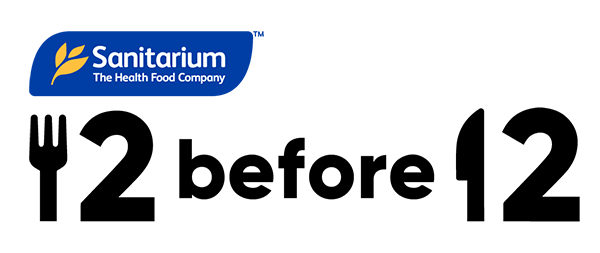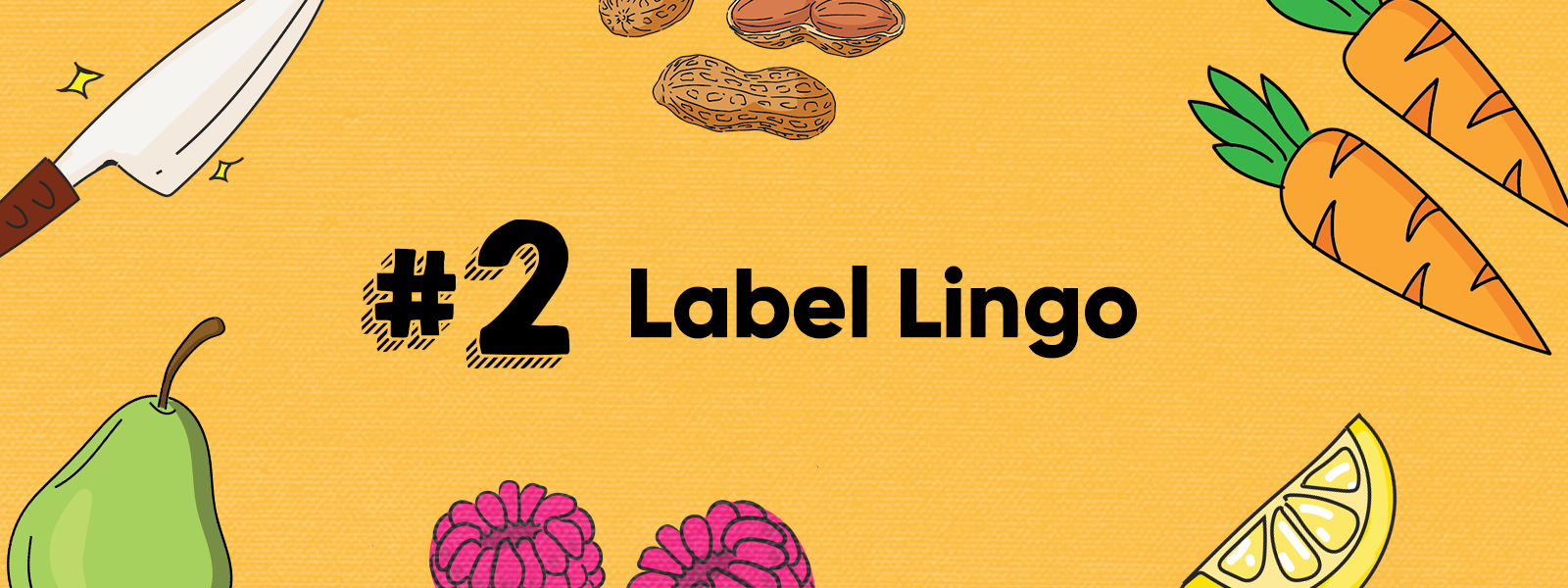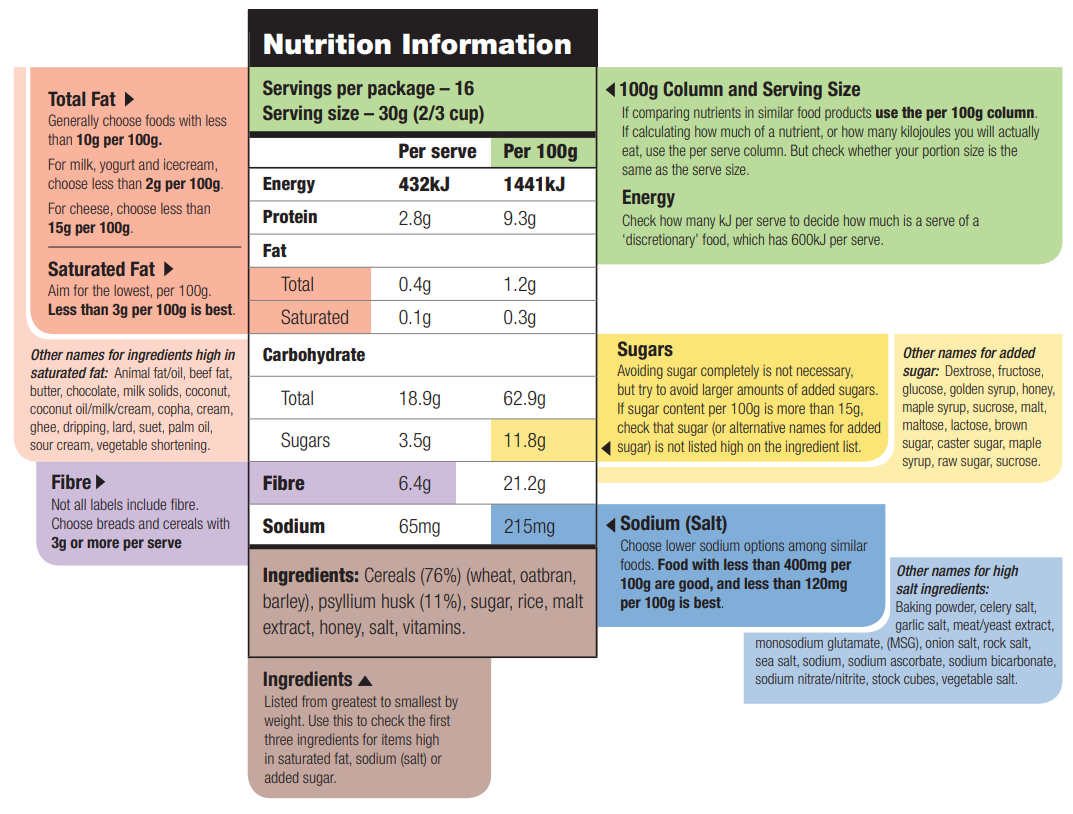You’ll find food labels on all pre-packaged foods and drinks in Australia. They contain LOTS of information to help you make better food choices – but they can be pretty confusing too! It’s especially important to learn how to read food labels if you have allergies or other health conditions like diabetes.
Look out for these labels to help learn which foods are good choices for you!
Health Star Rating
Even grown-ups struggle to understand packaged food labels. That’s one of the reasons why the Australian Government introduced the Health Star Rating. It’s pretty simple to learn – the more stars a packaged food or drink has, the healthier the choice. Use the Health Star Rating to compare similar packaged products, like one breakfast cereal with another breakfast cereal.
But remember:
- Don’t use the Health Star Rating to compare completely different types of foods, like yoghurts with tomato sauce. Just use it to compare similar packaged products, like comparing one breakfast cereal with another breakfast cereal.
- The Health Star Rating is only used on packaged goods, so things like fresh fruit and veggies don’t get a rating. That doesn’t mean they aren’t healthy. In fact, if they did get a rating it would probably be 6 stars out of the possible 5!
- The Health Star Rating isn’t mandatory – food manufacturers get to decide whether they want to put the Health Star Rating label on their packaging. But as a general rule, if a packaged food or drink that doesn’t have a Health Star Rating on it, you could probably make a healthier choice.
To learn more about the Health Star Rating take a look at this helpful guide from Sanitarium.

Nutrition Information Panel (NIP)
This detailed box lists all the energy, protein, fat, carbohydrate, sugar, dietary fibre and sodium that the food or drink contains. Sometimes it might list other nutrients too, like calcium, iron and vitamins. Learning to read a NIP is an advanced skill, but if you think you’re ready visit www.sanitarium.com.au to find out more.
Ingredients List
Every ingredient of a packaged food or drink is listed here in order from the highest quantities to the least. Allergens are listed in bold font and there will be an allergen statement below the ingredient list to make sure that people know these ingredients are in the product. Some common allergens include peanuts, tree nuts, milk, eggs, sesame seeds, fish, shellfish, soy and wheat.
Sometimes you’ll come across ingredients you’ve never heard of before. These might be additives that give the product its texture, its taste, its colour, or help it stay fresh while it’s sitting on the supermarket shelf. They also might be different names for things like saturated fat, salt and sugar. Look out for some of these names when you next go shopping.
| SATURATED FAT | SALT | SUGAR |
| Animal oil/fat | Sodium | Sucrose |
| Butter fat | Rock salt | Glucose |
| Milk solids | Baking soda/powder | Fructose |
| Coconut oil | Yeast extract | Dextrose |
| Palm oil | Stock cubes | Rice malt syrup |
| Lard | Monosodium glutamate (MSG) | Corn syrup |
| Tallow | Meat extract | Molasses |
Nutritionist Nate Tip
Some of the most nutritious foods in the supermarket don’t have labels on them. In fact, they don’t even have packaging – except their natural skins of course! I’m talking about fresh fruit and vegetables and you don’t need to be a food fact fanatic like me to know that these foods are super good for you.


